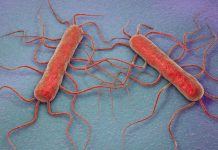Listeria monocytogenes (Listeria) is a harmful bacteria found in moist environments, soil, water, decaying vegetation, and animals, and can survive and even grow under refrigeration and other food preservation measures.
Unlike most bacteria, Listeria survive and multiply at lower (refrigerator) temperatures – which allows it to reach levels high enough to cause illness. Although freezing will prevent Listeria bacteria from growing, it does not kill the bacteria.
Listeria is commonly found and grows in refrigerated ready-to-eat (RTE) and unpasteurized (raw) milk and milk products. The longer ready-to-eat refrigerated foods contaminated with Listeria are stored in the refrigerator, the more opportunity this pathogen has to grow.
Keeping your refrigerator clean is an important part of food safety. Clean your refrigerator regularly and wipe up spills immediately.
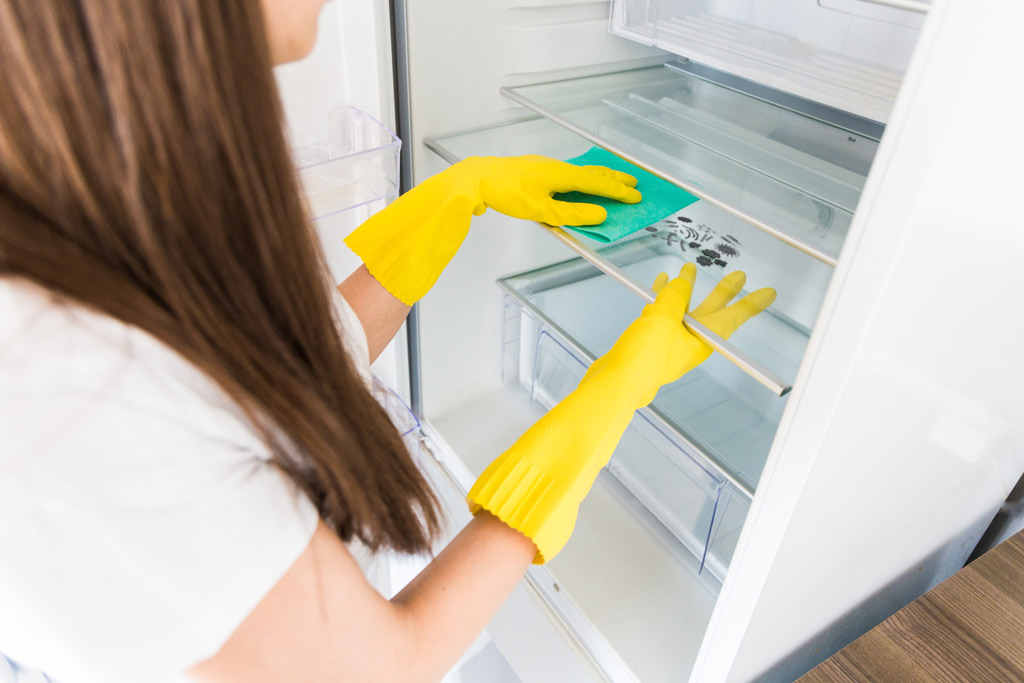


For most healthy people, a Listeria infection (Listeriosis) doesn’t pose much of a threat, but for some people (pregnant women, newborns, older adults, and people with weakened immune systems), the infection can be serious or even life-threatening, particularly pregnant women and their unborn babies.
- Learn about proper hygiene, cross contamination, cold and hot food safety, foodborne pathogens, and best practices to prevent foodborne illness.
- Food Manager Training & ANSI Certification - $99.00
- Food Handler Training - only $7.00!
- HACCP Training: 16hr/4hr/1hr
- Food Allergy Training - $15.00
- Enter Promo "train10off" at Checkout
Ready-To-Eat (RTE) Foods
Ready-To-Eat foods are pre-packaged foods for ease of consumption. Products designated as convenience or ready-to-eat foods are often prepared food that can be sold as hot, ready-to-eat dishes; as room-temperature, shelf-stable products; or as refrigerated or frozen products that require minimal preparation (typically just heating).
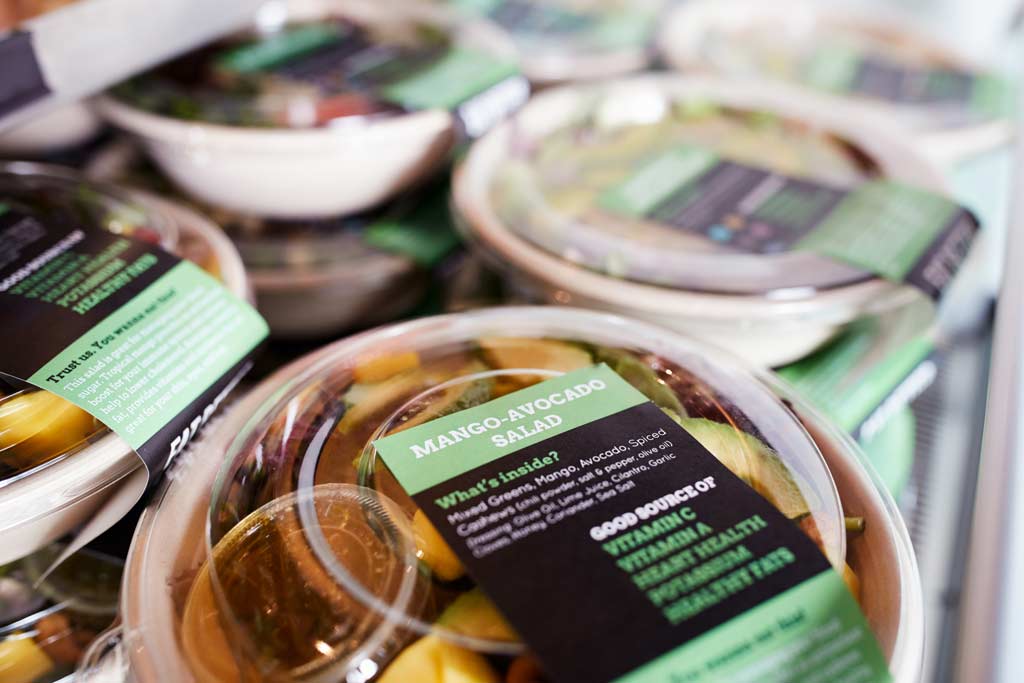


Ready-to-eat foods have a high risk of causing foodborne illness. Some examples of ready-to-eat foods include:
- Soft cheeses such as brie, feta, ricotta, blue-veined, and Mexican-style soft cheeses such as queso fresco (unless it is made with pasteurized milk)
- Soft-serve ice cream
- Hot dogs, luncheon meats, cold cuts
- Pâtés/meat spreads – unless canned
- Precooked chicken and other meats
- Refrigerated smoked seafood products
- Deli-type salads such as coleslaw, potato, macaroni, tuna, etc.
- Pre-packed raw vegetables and mixed raw vegetable salad
- Pre-cut fresh fruits and fruit salads



Raw Milk and Milk Products
Raw milk, i.e., unpasteurized milk, can harbor dangerous microorganisms that can pose serious health risk. Raw milk is milk from cows, sheep, or goats can contain harmful bacteria such as Salmonella, E. coli, and Listeria.
Pasteurization is the process that kills harmful bacteria by heating milk to a specific temperature for a set period of time.



Groups More Vulnerable to Listeria
Listeria infections are dangerous to people with weakened immune systems (such as transplant patients and individuals with HIV/AIDS, cancer, and diabetes), children, older adults, and pregnant women.
Some people with Listeria infections, most commonly adults 65 years and older and people with weakened immune systems, develop severe infections of the bloodstream (causing sepsis) or brain (causing meningitis or encephalitis).
Listeria infections can sometimes affect other parts of the body, including bones, joints, and sites in the chest and abdomen.
Pregnant women run a serious risk of becoming ill from the bacteria Listeria. If a woman is pregnant, Listeria can can cause miscarriage, or illness, or death of the newborn baby – even if the mother doesn’t feel sick.
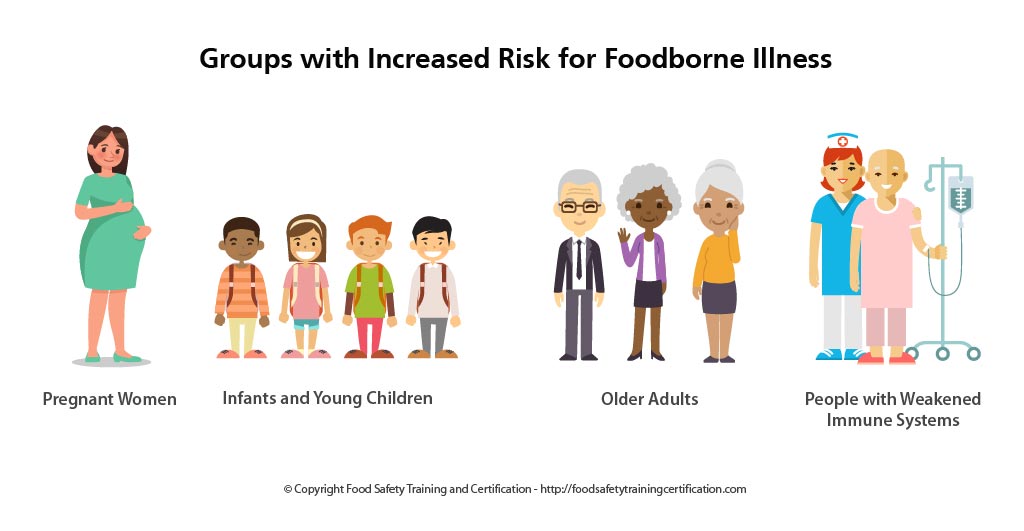


What are the symptoms of listeriosis?
Listeriosis can cause a variety of symptoms, depending on the person and the part of the body affected. Listeria can cause fever and diarrhea similar to other foodborne germs, but this type of Listeria infection is rarely diagnosed. Symptoms in people with invasive listeriosis, meaning the bacteria has spread beyond the gut, depend on whether the person is pregnant.
- Pregnant women: Pregnant women typically experience only fever and other flu-like symptoms, such as fatigue and muscle aches. However, infections during pregnancy can lead to miscarriage, stillbirth, premature delivery, or life-threatening infection of the newborn.
- People other than pregnant women: Symptoms can include headache, stiff neck, confusion, loss of balance, and convulsions in addition to fever and muscle aches.
People with invasive listeriosis usually report symptoms starting 1 to 4 weeks after eating food contaminated with Listeria; some people have reported symptoms starting as late as 70 days after exposure or as early as the same day of exposure.
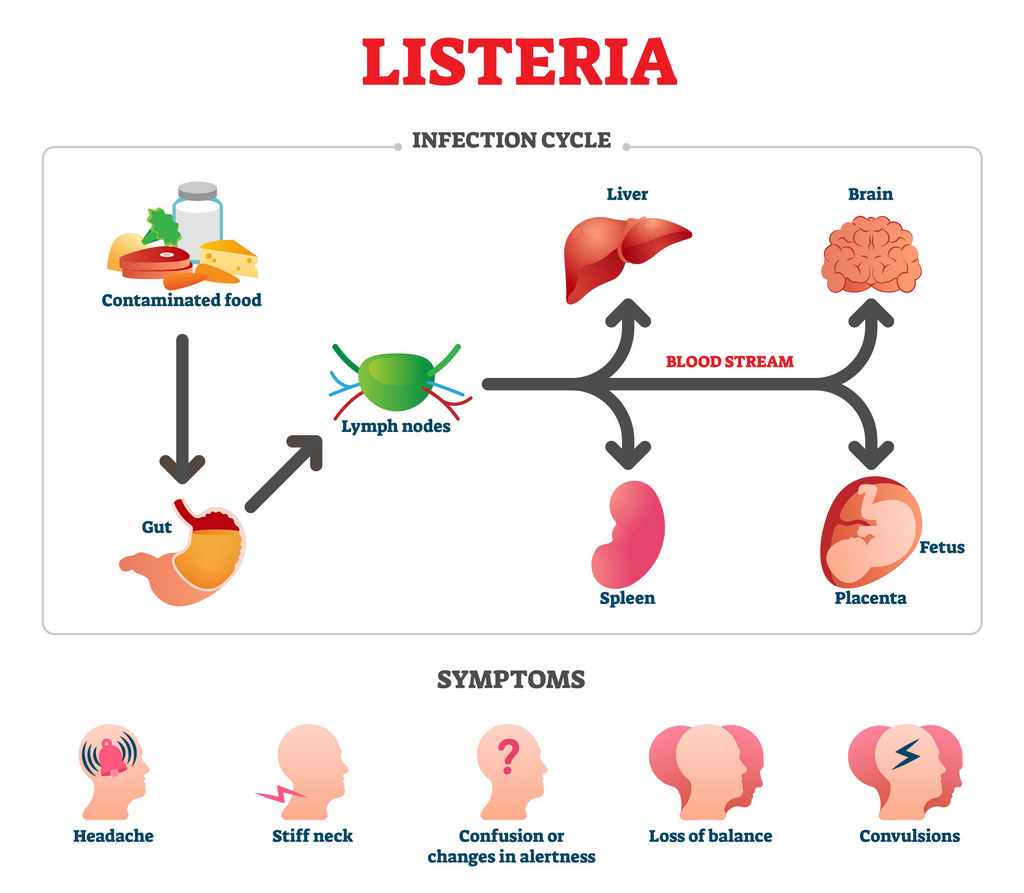


How to Reduce Your Risk from Listeria
Keeping your refrigerator clean is an important part of food safety. Clean your refrigerator regularly and wipe up spills immediately.
There are three very simple things you can do to help prevent illness from Listeria:
Keep Refrigerator at the Proper Temperature
The right temperatures slow the growth of Listeria. Put a refrigerator thermometer in the refrigerator and adjust the refrigerator temperature control, if necessary. Put a second thermometer in the freezer. Your refrigerator should register at 40°F (4°C) or below and your freezer at 0°F (-18°C).
Use Ready-to-Eat Foods Quickly
Use ready-to-eat, refrigerated foods by the Use By date on the package. The longer they’re stored in the refrigerator, the more chance Listeria has to grow.
Keep Refrigerator Clean
Clean your refrigerator regularly. Wipe up spills immediately. This is particularly important, so Listeria doesn’t have a place to grow and then spread to other foods.
Wash the inside walls and shelves of the refrigerator, cutting boards and countertops, and utensils that may have contacted contaminated foods; then sanitize them with a solution of one tablespoon of chlorine bleach to one gallon of hot water; dry with a clean cloth or paper towel that has not been previously used.
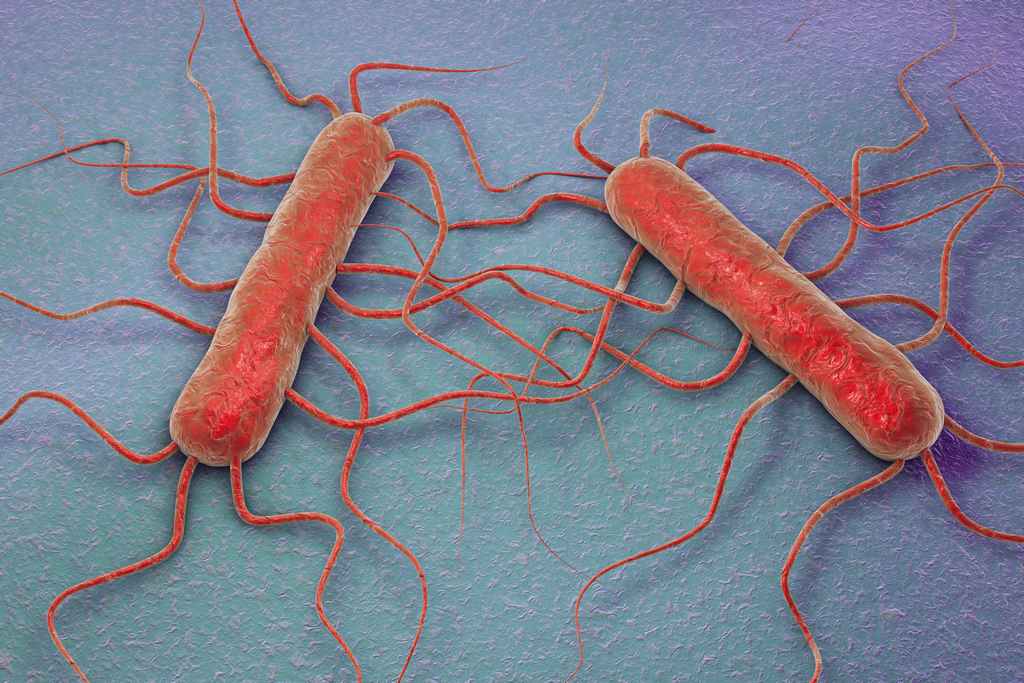


References
- CDC: Listeria.
https://www.cdc.gov/listeria/index.html - FDA: Get the Facts about Listeria.
https://www.fda.gov/animal-veterinary/animal-health-literacy/get-facts-about-listeria - WebMD: What is Listeria?
https://www.webmd.com/food-recipes/food-poisoning/what-is-listeria#1 - Food and Drug Administration website. Food safety for pregnant women.
http://fda.gov/Food/FoodborneIllnessContaminants/PeopleAtRisk/ucm312704.htm - New York State Department of Health website. Listeriosis (Listeria infection).
http://health.ny.gov/diseases/communicable/listeriosis/fact_sheet.htm




